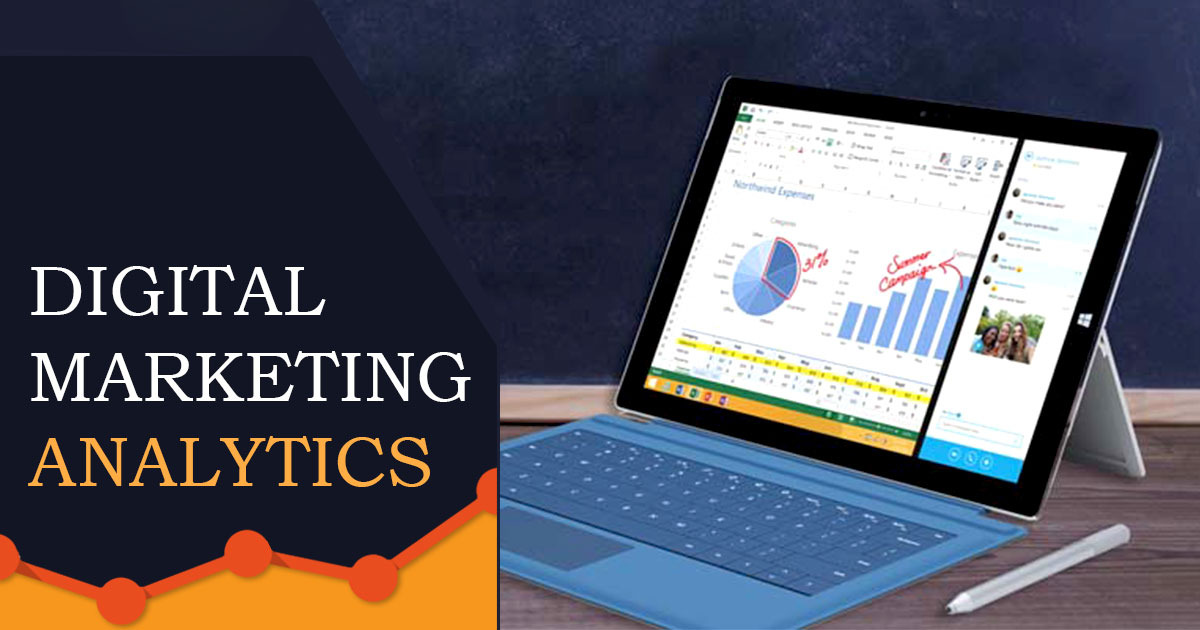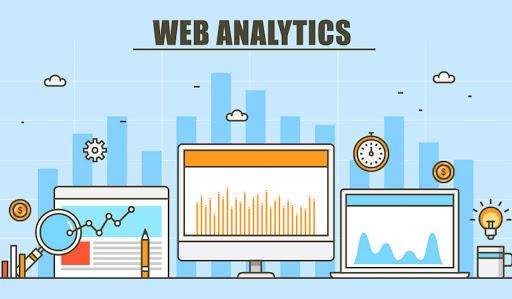The importance of Digital Marketing Analytics to Business!
Measuring the effectiveness of digital marketing campaigns is a big challenge for many businesses. According to the State of Inbound report of HubSpot 2019, 46% of marketers said that measuring and proving the return on investment (ROI) of marketing activities they carried out was one of the most challenging things they encountered.
The problem is that most marketers who hear about “digital marketing analytics” tend to think of data from Google Analytics web analytics tools like traffic, unique visitor, bounce rate, etc. while the definition of digital analytics is broader than that.
Let go ahead with AVADA to dive deep into digital marketing analytics and see how important is it to your business.
What is digital marketing analytics?

Digital analytics is the analysis of qualitative and quantitative data from businesses and competitors to improve the online and offline experience of the target and potential customers.
While web analytics tools can provide you with a wealth of insights and performance data, marketers need a valuable data source to evaluate the impact of marketing campaigns on customer behavior and conversion rates through the sales and marketing channels of the business. Looking at web analytics, such as traffic, is only part of the whole picture.
With digital analytics, marketers can evaluate the effectiveness of marketing activities, not just website performance. Using digital analytics allows marketers to identify and compare the effectiveness of marketing channels such as social media with blogging or email marketing, etc. identify ROI from activities and understand how to achieve business goals. From the comprehensive information gathered from digital marketing analytics, marketers can review the gaps in specific marketing channels and tailor the marketing strategy to each target group.
Read more:
- Integrated Marketing Communication: Definition & Examples
- Marketing Research Process
- Principles of Marketing 101: The Ultimate Guide!
- Direct Response Marketing - Definition & Best Practices
- Basic Google Tag Manager Tutorial for Digital Marketer
3 Important metrics of digital marketing analytics to consider
Although there is no catch-all metrics kit to track, there are a few more complex analytics offering useful insight.
Organic Search Traffic
Although referral and direct traffic are beneficial, organic search traffic remains one of the most powerful avenues of traffic generation. In reality, organic search results place the consumer 94 percent of the time in a head-to-head matchup between paid traffic and organic search results.
Google Analytics gives key information that leads to your site. Specifically, look for building volume of non-branded keywords, an indicator that traffic is created through related content and a sense of trust. This will create more long-run traffic, future direct traffic, and help encourage connection-building.
Top Landing Pages
Visitors don’t find information just simply on your website. Sometimes they have to browse several web pages, starting with your landing pages first. This measure explores what sites the customers are greeting from. Such pages should be designed in terms of both copy and load time, to engage viewers easily and quickly and lead them to more conversion of sales or browsing.
Segmentation
Customers can no longer be lumped into one large category when customization is required. Among several other parameters, Google Analytics enables the analysis and filtering of user activity based on traffic sources, apps, and keyword searches.
Using every of these requires case-by-case comprehension of their use, but enough to claim customer behaviors depends on more than your copy. Understand the goals, priorities, and reference source of your target so you can better understand their future behavior. This will assist in promoting effective promotion and targeting of existing and future campaigns.
Digital marketing analytics vs web analytics: The difference
One of the most significant advantages of doing business in the online era is tracking and evaluating performance using digital analytics. Digital analytics, however, differs from basic web analytics metrics that we see in the Google Analytics application.
Web analytics is just a significant part of digital analytics. Web analytics is all about the website’s metrics, while digital analytics helps you get a more holistic view of the overall marketing plan. This gives enables you to develop your marketing strategy and gives you the insight you need to realize where you are headed, and if your efforts pay off. This is indeed a privilege you don’t enjoy with traditional advertising because there’s literally no choice.

Whether just reviewing website visits or running email marketing campaigns, you can decipher a vast array of information to know your success rate. There are several elements that become more of a requirement than a pure need when starting and growing a business in any field. Creating a website is one of those factors as it has become an important part of the digital marketing environment today.
You will not have access to important analytics data without a proper web site in place. Which, in effect, will result in business losses which cannot be recovered?
The days are gone when consumers used to visit the online store just to get in contact with or learn more about the business. Nowadays, people use websites to make product inquiries, converse with brands, buy items needed while consuming targeted and relevant material.
A company website has become a hard-to-ignore digital marketing device. As it aims to provide not only information but also high-level interaction. And what your company gets in return for that, is valuable data and knowledge that can be used to enhance your own marketing activities and expand your business.
The importance of digital marketing analytics to your business
There is a push to understand buyers and there is the need for reliable real-time analytics. As social media and internet use are on the rise, digital marketing data is also on the rise. Social media and other digital marketing tools will be the key to knowing what consumers like, need, and feel about a given product.
When the data is collected and analyzed from a number of social media platforms and digital marketing strategies, it can provide significant power for a company to reach its audience.
Understand the buyers
Data is key to understanding how the target audience feels. Digital marketing analytics will construct a customer’s demographic. It can give a full picture of the person with data, including location, age, likes, and dislikes.
Understanding this data can be of great benefit to every organization because it will help them determine what to sell to each group, enabling them to target their audience better. A company may use digital marketing tools such as social media by analyzing this data.
Improvement
Digital marketing strategy data can help a company understand its audience and strengthen the way they market to them. Data analysis behind a campaign will help explain its performance, why, and how it was engaged with by the viewer.
After the data is processed, it could be used to help develop and enhance not just campaigns, but where it is advertised and how often it is sent, for instance, social media has more attention to a specific campaign than to a newsletter. These data can help the company save money, as they can see which networks are working and where to avoid.
Predictions

By evaluating the data, predictive analytics can also be used, allowing the company the opportunity to make data-driven decisions on what to sell and when. Trends will start to form when the data is taken from customer shopping habits. That kind of analytics will help the organization determine when a specific product could be most in order.
This data also helps you see how predicted trends will take shape, and social media can greatly affect that. Because trends can evolve rapidly, advertisers can see what their target is talking about and posting online and foresee patterns and trends for what would become the next huge concern.
There are several reasons your online store should invest in digital marketing analytics, and above are only a few. It’s important to get the insights and data of campaigns with digital marketing and social media at the forefront of reaching clients.
How to use digital marketing analytics effectively
Many marketers know that to get the insights we’ve talked about so far, they have to look at more than just traffic and website results. Yet why are so many of us still struggling to evaluate the effects of our online marketing activities and prove the ROI?
This could be for one of two reasons. One is that we don’t have a way to measure our success. Or else, we don’t have solid goals for the campaigns. Very often, you can realize that this is a mixture of the two.
S.M.A.R.T Goals
One way to minimize this is to create an actionable strategic strategy that incorporates the marketing department’s goals. This can usually be done using the format S.M.A.R.T. Each target you build in this strategy must be to:
- Specific
- Measurable
- Achievable
- Realistic
- Timely

A successful business aim ultimately organizes the staff’s activities towards achieving measurable results or benchmarks to evaluate their success. This can be roughly outlined in three main categories for the marketing teams:
- Trying to identify net new revenue as a result of such marketing activities, setting out a plan for further development and cost-effective marketing investment
- Source diversity and web traffic
- Conversions created from traffic to leads and customers
Most marketers that understand the principle of digital transformation now leverage a variety of data analytics tools to obtain the insights required to understand their marketing success and make wise choices.
For instance, they collect data about their email marketing via their email service provider’s analytics, blog analytics through their blogging platform, data about their success in social media via their social media management tool, and the list goes on.
However, this fragmented approach to analysis makes connecting the dots and making educated decisions for the future of the digital marketing strategy very tough.
The perfect approach is to incorporate an all-in-one marketing and reporting framework that offers end-to-end control into your marketing efforts, enabling you to monitor everything in one place.
Campaign-Based Reporting
Rather than only focusing on packaged reports for each traffic source, you can use custom reporting tools to create data charts that represent the success of an entire marketing strategy, not just how certain content is being delivered across certain platforms.
Below’s how you can customize your data analytics to capture that holistic perspective, displaying you where a potential customer has come from. The following are some of the types of analytics that a professional marketing tool can use.
Web Traffic by Original Source
It is a simple report that you can customize by the original source and/or date range to indicate which marketing platforms you should focus on in order to transform more of the traffic into leads and clients.
First Conversion by Persona or Original Source
This attempts to measure your impact by how many new contacts you can build based on the first content offer or form submitted, and relate that back to the lead’s original source.
Or else, you can classify your contacts by a specific person to show which ones give the most return on whatever content your team is making.
Contacts Funnel Report
It measures the conversion rates down the sales and marketing funnel, highlighting new leads that are sales-qualified leads, marketing-qualified leads, and new customers in the end.
Marketing Contribution to Revenue
This custom report relies on the use of the marketing stages of visualizing those that have been transformed into customers, a qualified lead lifecycle, and their relative value in terms of generated revenue.
Customer Acquisition Cost

These closed-loop reports are only a few of the available tools to illustrate your progress towards the bottom line of your business.
The information, insights, and data that you can collect from your digital marketing analytics tool(s) are really only valuable if you do something with them. The true benefit of analytics isn’t only to show the boss’ brand interest; it’s also to let you enhance and maximize the marketing efficiency — both on a cross-channel system overall as well as a channel-by-channel basis.
You will also be able to incorporate closed-loop analysis through digital marketing analytics, making it much easier to show whether your marketing strategies are having a positive effect on your sales team, who are being served much superior quality leads.
Read more:
- 20 Must-Have Marketing Skills
- Best Free Market Research Tools for Marketing Campaign
- 14 Best Shopify Analytics Apps
- Digital Marketing For Dummies
Conclusion
In short, digital marketing analytics plays a vital role in turning your business goals into measurable results that support your profitability. Therefore, you should not rely solely on web analytics so you don’t miss out on powerful data that can provide useful insight into your marketing strategy.
Plus, leveraging digital marketing analytics helps you better connect with your customers and audience. Instead of focusing on page views, prioritize data that reflects people, your business can grow quickly.
Thanks for reading this whole article. Hope you can run your business better by using digital marketing analytics effectively.
New Posts






